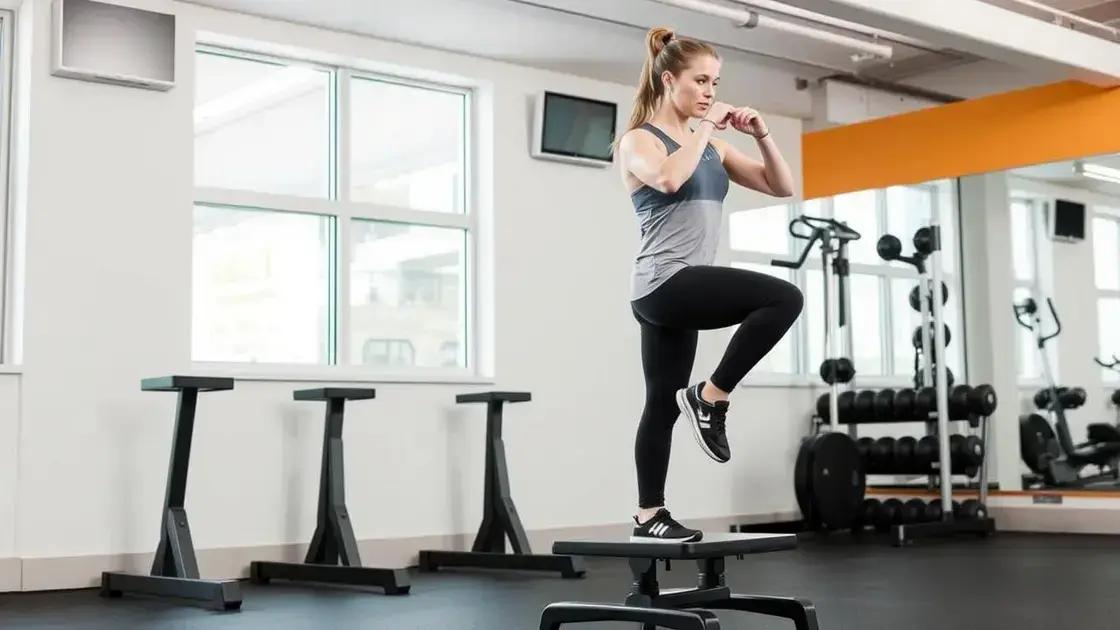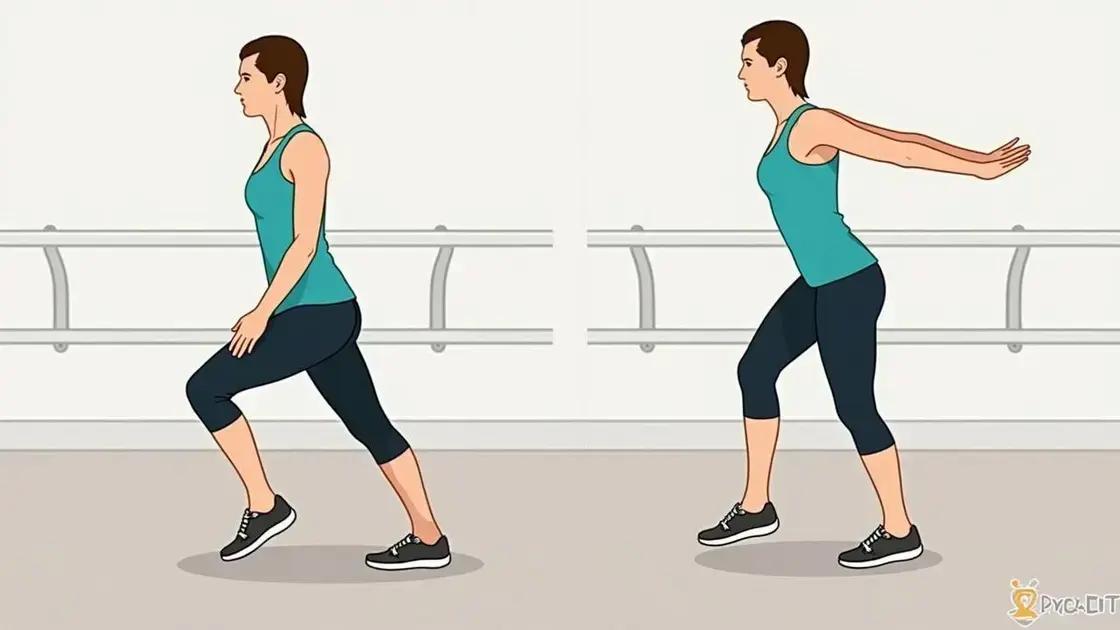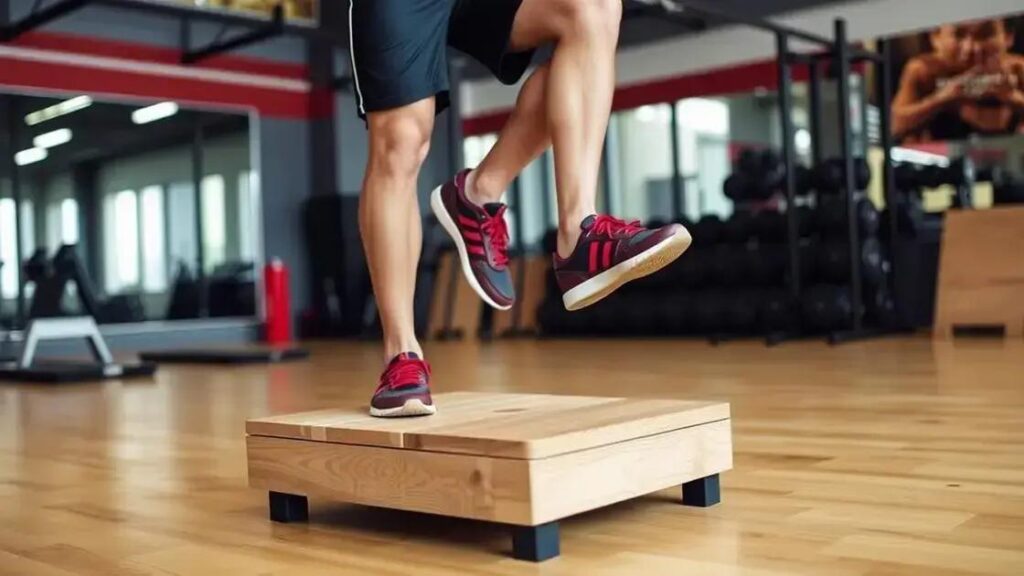Step-up exercises are vital for leg strength training, offering benefits like improved balance, core stability, and functional strength. By using the correct form and incorporating these exercises into your routine, you can enhance overall fitness and avoid common mistakes for optimal results.
Step-up exercises are essential for building leg strength and improving overall athletic performance. By engaging multiple muscle groups, these exercises enhance stability and power, making them a staple in many training programs. In this article, we will discuss the fundamentals of step-up exercises, their benefits, proper techniques, and how to avoid common mistakes, ensuring that you maximize your workout potential.
Understanding Step-Up Exercises

Step-up exercises are effective movements that target the major muscles in your legs. They primarily work the quadriceps, hamstrings, and glutes. These exercises involve stepping onto an elevated surface and then stepping back down, simulating a natural walking motion that enhances strength and balance.
How to Perform Step-Up Exercises
To perform a step-up, you’ll need a sturdy platform, such as a bench or step. Begin by standing in front of the platform. Place your right foot firmly on the step. Push through your right heel to lift your body onto the platform, bringing your left foot up to meet your right. Step back down gently with your left foot and then your right foot. Start with a few sets of 10-15 repetitions on each leg.
Types of Step-Up Variations
There are several variations of the step-up exercise to keep your workout routine engaging. You can increase the difficulty by holding weights in your hands or using an incline. Lateral step-ups involve stepping sideways onto the platform, while weighted step-ups include holding dumbbells to further challenge your strength.
Muscle Engagement
Step-ups engage several muscle groups. The primary focus is on your quadriceps as you push through your front leg. Your glutes are worked as you lift and stabilize your body. This multi-muscle involvement makes step-ups not only a strength-building exercise but also a great way to improve core stability and balance.
Benefits of Step-Up Exercises for Leg Strength

Step-up exercises offer numerous benefits that directly enhance leg strength and overall fitness. By regularly incorporating them into your workouts, you can experience significant improvements in muscle tone and power.
1. Building Stronger Legs
One of the main benefits of step-up exercises is their ability to build stronger legs. By engaging the quadriceps, hamstrings, and glutes, these exercises promote muscle growth and endurance.
2. Improved Balance and Coordination
Step-ups challenge your balance and coordination as you lift your body onto an elevated surface. This stability training is crucial for athletes and anyone looking to enhance their functional movement.
3. Increased Functional Strength
The movements involved in step-up exercises mimic daily activities like climbing stairs or getting in and out of cars. This increases your functional strength, making everyday tasks easier and reducing the risk of injury.
4. Boosting Core Stability
When performing step-ups, your core muscles are engaged to maintain balance. This not only enhances your leg strength but also contributes to overall core stability and posture.
5. Versatility and Adaptability
Step-up exercises can be modified to suit any fitness level. You can vary the height of the step or add weights to increase intensity. This adaptability makes them suitable for beginners and advanced fitness enthusiasts alike.
How to Incorporate Step-Ups into Your Routine

Incorporating step-ups into your fitness routine is easy and effective. Here are some tips to help you get started:
1. Choose the Right Height
Select a step height that challenges you but allows you to maintain proper form. Beginners may start with a lower step, while more experienced individuals can increase the height for added intensity.
2. Warm Up Properly
Before you begin your workout, make sure to warm up your muscles. Light cardio, like jogging in place or dynamic stretches, prepares your body for exercise and reduces the risk of injury.
3. Start with Bodyweight Step-Ups
If you’re new to step-ups, begin with bodyweight exercises. This helps you focus on your form. Aim for 2-3 sets of 10-15 repetitions per leg. Progress to adding weights as you build strength.
4. Incorporate Step-Ups into Your Full Routine
Mix step-ups into your leg workouts or total body routines. They can be performed in supersets with other exercises like squats or lunges for an efficient workout.
5. Monitor Your Form
Always prioritize proper form over the number of repetitions. Keep your chest up and your knee behind your toes. This technique helps prevent injury and ensures you are working the right muscles.
6. Schedule Step-Ups in Your Routine
Include step-ups in your weekly exercise schedule 2-3 times a week. This consistency will help you track your progress and improve your leg strength more effectively.
Common Mistakes in Step-Up Training

When performing step-up exercises, there are some common mistakes that can affect your results and lead to injury. Here are key errors to avoid:
1. Poor Foot Placement
One common mistake is not placing the entire foot on the step. Make sure your foot is fully on the platform to maintain balance and reduce stress on your knees.
2. Leaning Too Far Forward
Leaning forward during the exercise can put unnecessary pressure on your lower back. Keep your torso upright to engage your core properly and support your spine.
3. Not Engaging the Core
Failing to activate your core muscles can compromise your stability. Always tighten your core during step-ups to improve balance and performance.
4. Rushing Through the Movement
Performing step-ups too quickly can lead to sloppy form and increase the risk of injury. Focus on controlled movements, allowing you to maintain good technique and engage the correct muscles.
5. Neglecting Warm-Up
Skipping your warm-up can lead to muscle strain. Always start with a proper warm-up, including dynamic stretches, to prepare your muscles for exercise.
6. Using Excessive Weight
Adding too much weight too soon can compromise your technique. Start with bodyweight or light dumbbells before increasing resistance to ensure you maintain proper form.
In Summary: The Importance of Step-Up Exercises
Incorporating step-up exercises into your fitness routine plays a vital role in enhancing leg strength, improving balance, and building functional power.
By understanding the fundamentals, benefits, and proper techniques, you can maximize your workout and achieve significant strength gains.
Be mindful of the common mistakes associated with step-ups to ensure safety and effectiveness in your training. With consistent practice and correct form, step-ups can be a powerful addition to any leg-strengthening program.
Embrace these exercises to elevate your fitness journey and unlock your full potential.
FAQ – Frequently Asked Questions about Step-Up Exercises
What are step-up exercises?
Step-up exercises involve stepping onto an elevated surface, engaging major leg muscles like the quadriceps, hamstrings, and glutes.
What are the benefits of step-up exercises?
Step-up exercises help build leg strength, improve balance, enhance functional strength, and boost core stability.
How often should I perform step-up exercises?
Incorporate step-ups into your routine 2-3 times per week for effective results in building leg strength.
What is the proper form for step-up exercises?
Ensure your entire foot is on the step, keep your torso upright, and engage your core throughout the movement.
What common mistakes should I avoid when doing step-ups?
Avoid poor foot placement, leaning forward, rushing the movement, and using excessive weight too soon.
Can beginners perform step-up exercises?
Yes, beginners can start with bodyweight step-ups on a low platform and gradually increase the height or add weights as they improve.












